"Once upon a time... in the west!" The fabulous Fokker D.VII "Seven Swabians"
About the Fokker D.VII “Seven Swabians”
Aircraft fuselages as canvases have left a long and, literally, colourful trace in the history of aviation, across times and nations. The elongated fuselages, the aircraft noses and sometimes also the wings have been an irresistible invitation for many to make a more or less creative "statement". From the vast amount of these decorations, some examples stand out particularly. The Fokker D.VII of Jasta 65 shown here must, one may claim, be counted among this group.
A special feature here is not only the size and colourfulness of the painting, but also the chosen content. The fairy tale of the "Seven Swabians" is rather about, well, anti-heroes! In the following I will try to give a short version of the underlying fairy tale:
One day, seven brave Swabians decide to go on an adventure and perform great heroic deeds. So a big spit is organised, but it is so big that all seven have to carry it together. Soon after setting off on their heroic journey, they clumsily tell each other such wild and gruesome stories that when night falls, they shiver with fear. In this way, an innocent bunny that hops across their path becomes a terrible monster. Although they unite to attack the monster with their oversized spear, things quickly get out of hand. One of the Swabians misunderstands and believes that the bravest among them wants to flee. He turns to flee himself, which is soon followed by all of them, of course - and so the attack ends in disaster. The story continues in this vein for quite a while until it comes to a tragic end. Arriving at the river Moselle, they consider how to cross the wide stream as efficiently as possible. Unfortunately, the unhappy trinity of self-fabricated misunderstandings, ignorance and cowardice strikes again here; this time, however, lethally. All seven Swabians meet a predictable and, above all, wet end when they attempt to get over the river. So much for a short version of the story as I understood it. If you want to read the long version, you can read it here , this time told by the Brothers Grimm. (in German)
https://www.grimmstories.com/de/grimm_maerchen/die_sieben_schwaben
The person who commissioned this early "fuselage art" had a good deal of irony, but the question of who that person was is a matter of debate today. In most cases, Private Wilhelm Schneutzel is named as the person responsible. Other sources, however, which also seem credible, name non-commissioned officer Alfred Bäder from Stuttgart as another native Swabian who commissioned this very special decoration. There is no doubt, however, that the aircraft existed and that it belonged to Jasta 65.
The fighter squadron 65 was newly formed in January 1918 and was deployed in the West from 4 February. Its first location was Mars le Tour, the unit experienced the end of the war a few months later in nearby Tíchemont, where it had been stationed from mid-October. The fighter squadron was responsible for 34 confirmed aerial victories during this period, at the cost of six pilots killed. Two Jasta pilots were wounded and two were captured.
If Wilhelm Schneutzel was a pilot of the "Seven Swabians" Fokker, his (only) kill may have been achieved with this aircraft. On 13 August he shot down a DH.4 over Armaville, which then crashed on the German side of the front line.
The time of the installation of the Jasta 65 was also the birth of the Fokker D.VII. At the first "comparison flight" in Adlershof near Berlin, in January/February 1918, 31 designs competed against each other for the favour of the IdFlieg. Fokker's chief designer Reinhold Platz scored again with a true winning design.
The conventional but extremely stable construction, which went into series production as the Fokker D.VII, could convince with high manoeuvrability and speed, but above all its engine, which was installed either in the form of a 180 hp Mercedes IIIa engine or a 226 hp BMW IIIa in-line engine, made it an exceptionally powerful fighter aircraft. The D.VII was famous - and probably infamous among its opponents - for a capability that was unique in its time: it could climb and shoot while hanging on its propeller.
Numerous top pilots achieved their victories on the Fokker D.VII; the saying soon went round that the D.VII "made aces out of mediocre pilots". However, the fame and notoriety of the Fokker D.VII also created popularity on the enemy's side.
It was the only aircraft type to have the honour of being mentioned by name in the provisions of the Versailles Peace Treaty. The Allies demanded the delivery or demonstrable destruction of the German aircraft fleet, especially the D.VII ("...firstly, all of the D.7") Such a confirmation of superior qualities cannot be shown by every aircraft!
Paradoxically, however, this provision opened the way for years of post-war use for the dreaded fighter aircraft. Not only in warring countries such as Poland or the USSR, but also in countries such as the USA, Belgium or Hungary, e D.VIIs were kept in service in considerable numbers for years before some of them came into private hands.
The kit
The contents of the box meet all the high expectations that can be placed on an Eduard "ProfiPack" kit. Not only are there a whole range of useful scratched parts and a sheet of masking film ready to sweeten the model builder's handiwork, but Eduard's own plastic parts also contribute their share: Accuracy of fit as well as the level of detail is fabulous on the one hand, and very satisfying on the other.
The use of the etched parts of course greatly enhances the representation of the two Spandau machine guns. The effort to roll the openwork sheathing of the MG barrels by hand is manageable and definitely advisable.
I drilled a 0.5mm hole not only to prepare for the turnbuckles of the landing gear strut, but also to allow the control cables of the upper wing to lead into the fuselage. This extra effort is also as uncomplicated as it is worthwhile. The control cables of the remaining rudders at the tail were represented with thin wire.
The decals supplied by Eduard are beyond reproach and can be used wonderfully. It is especially important that the two large decals with the depiction of the seven Swabians are extremely fine and cleanly worked. This results in a barely visible transition to the painted surface of the fuselage.
Also the Lozenge decals of the kit would have been without doubt well to process and would lead to a beautiful result, the experiences with the recently finished E.V/ D.VIII have convinced me there. Nevertheless, I chose lozenge decals from the manufacturer "Aviattic". Two of the pictures should illustrate the reason for this choice: the Aviattic decals have even more colour depth and convey the specific character of a fabric covering even better.
All in all, I am quite satisfied with the finished D.VII, especially the fact that I have a really spectacular example of "special paint jobs" in my showcase. In any case, my thanks go to Eduard for this really convenient opportunity to build one of the great aircraft legends!
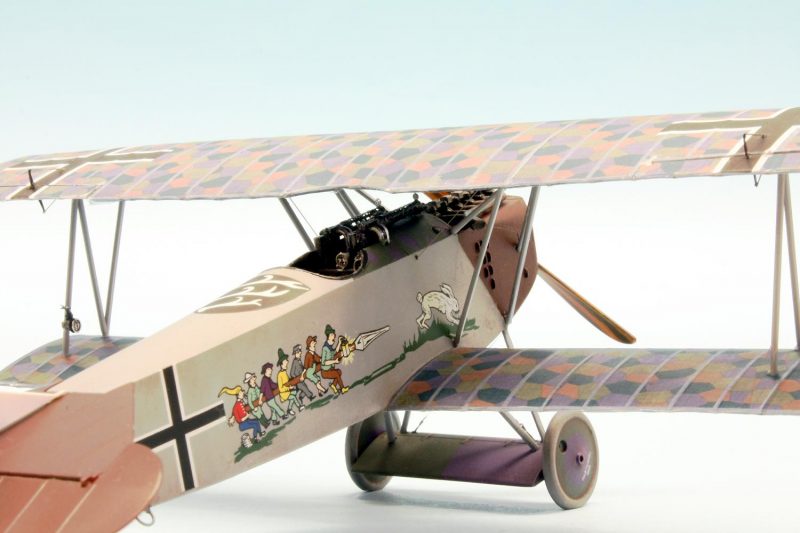
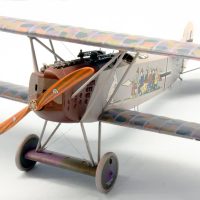
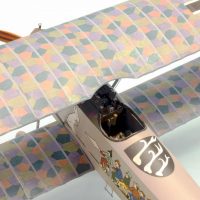
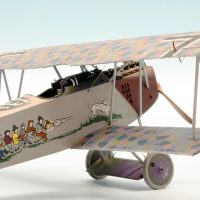
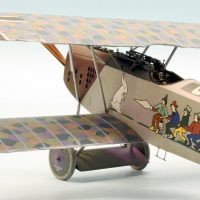

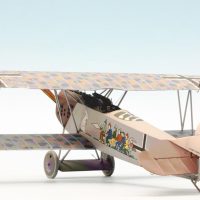
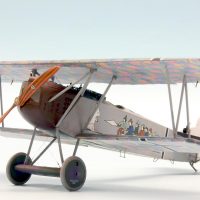
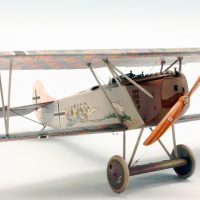
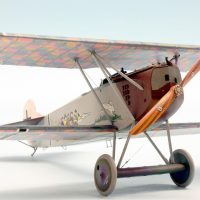
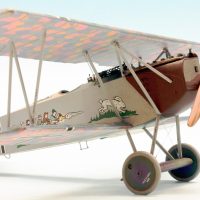
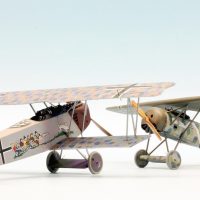
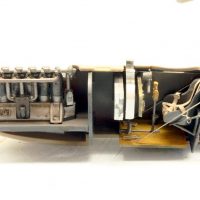

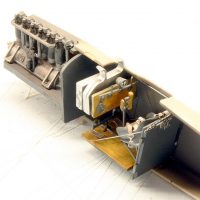
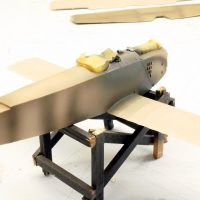

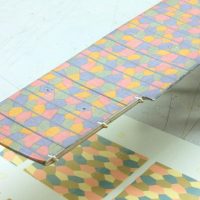
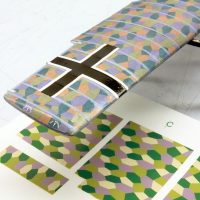
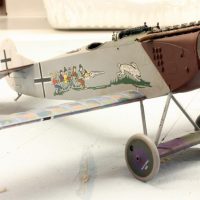
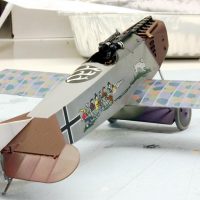
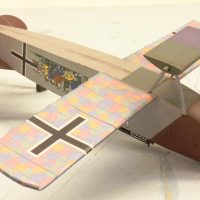
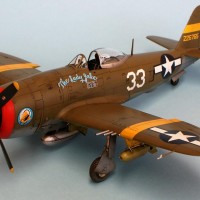

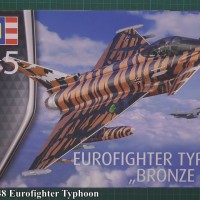

Beautiful model Roland, and also thanks for sharing the Grimm’s story of the 7 Swabians, one I do not knew.
The lozenge decals are one of my favorite nightmares, and definitely one that contributed to my WnW Fokker getting in the shelf of doom
I just might rescue this one this year thanks to your inspirational model here
Hello Pedro, thank you for your words!
Your D.VII looks flawless in the picture, lozenge included. I would be delighted to see this beautiful model completed in all its glory soon - a WnW Fokker D.VII, in 1:32 scale, must be a dream!
You delivered a very fine looking Fokker, Roland.
It was a pleasure to follow your thread.
Thanks for sharing the story, new to me as well.
The story behind the plane's markings is interesting and the model is quite impressive. For a moment I thought it was the 1/32 WnW kit.
Nice work, Roland.
Beautifully done!
Excellent background story as always, Roland, and a beautiful model, definitely liked.
Top build and great background story.
Great story and this is a beautiful build.
Really superb work here, Roland, and a wonderful result. Everything about it is just great.
Thanks for the story of the Seven Swabians - I hadn't known it before.
With pleasure!
Beautiful build and story, Roland!
A new fairy tale to contemplate, and an excellent model to drool over, both in a single post! Well done.
Thank you all, your many feedbacks and appreciative words really motivate and inspire me a lot! Thank you very much for this "push"!
Awesome build Roland. Also, thanks for the background story and aircraft history. I have an Edward d.VII that I may tackle now. Thanks for sharing.
Thank you Dennis!